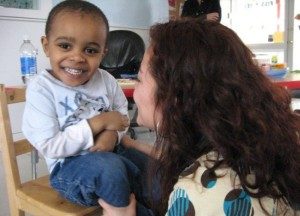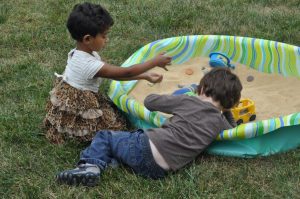Children with Autism demonstrate significant delays across a broad range of skill areas including expressive and receptive language, social skills, self-help, play skills, and academic skills. Intensive intervention delivered at a young age provides children with autism the greatest opportunities for success.
CSAAC’s Intensive Early Intervention (IEI) program serves children – ages 17 months to 10 years old – who receive between 6 and 30 hours of weekly of one-to-one intervention in their home as part of a comprehensive and results-oriented treatment program for children.
CSAAC’s professional staff implements an array of treatment methodologies suitable for young children and elementary age students including an applied behavior analysis program based on a method developed by Dr. Ivar Lovaas at UCLA in early intervention and discrete trial training for individuals with autism.
 The intervention focuses on building language, social, academic, and self-help/daily living skills for each child based on their individualized needs. Each program is overseen by a licensed psychologist and a special educator who lead a team of behavioral technicians, who are undergraduate and graduate psychology students. Children are taught language and social skills that children without autism learn naturally. Psychologists who specialize in the treatment of developmental disabilities provide the individual therapy, behavioral treatment, and social skills training for children diagnosed with Autism, Asperger’s Syndrome, and PDD.NOS.
The intervention focuses on building language, social, academic, and self-help/daily living skills for each child based on their individualized needs. Each program is overseen by a licensed psychologist and a special educator who lead a team of behavioral technicians, who are undergraduate and graduate psychology students. Children are taught language and social skills that children without autism learn naturally. Psychologists who specialize in the treatment of developmental disabilities provide the individual therapy, behavioral treatment, and social skills training for children diagnosed with Autism, Asperger’s Syndrome, and PDD.NOS.
One of the many strengths of the program is parent participation and training. With the knowledge that parents are a child’s first teacher and the home is a natural learning environment for young children, the program heavily involves parents, who receive training and tips on participating in their child’s treatment. They can also apply their child’s IEI program as a supplemental service that supports and reinforces skills learned in school. The child’s progress is monitored in weekly, bi-weekly, or monthly meetings where the child, his/her parents, and the child’s team are present. Data is maintained on each instructional interaction including discrete trials, generalization trials, contrived natural environment instruction, spontaneous occurrences of target behaviors, and incidents of maladaptive behavior.
 There are two paths to entry into the program. A child may be identified by a local Infants and Toddlers Program and referred for services or a family can seek early intervention supports directly. In some instances insurance may cover the cost of services.
There are two paths to entry into the program. A child may be identified by a local Infants and Toddlers Program and referred for services or a family can seek early intervention supports directly. In some instances insurance may cover the cost of services.
To learn more about CSAAC’s Intensive Early Intervention Program, contact Courtney Longest at 240-912-2365 or clongest@csaac.org.


